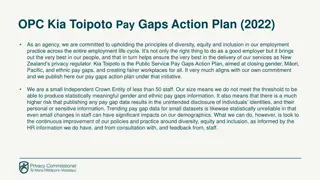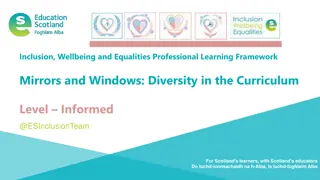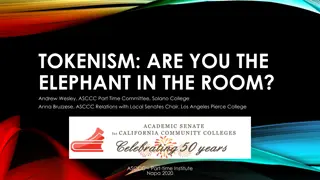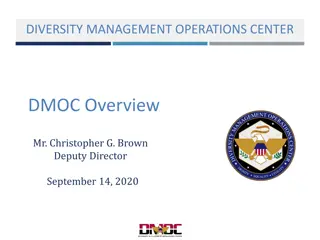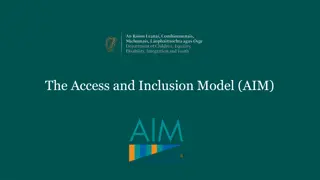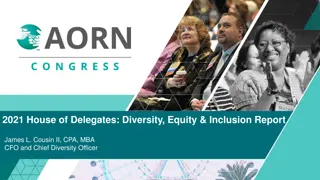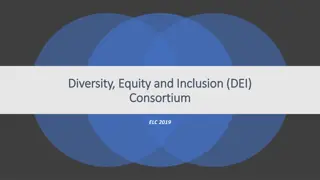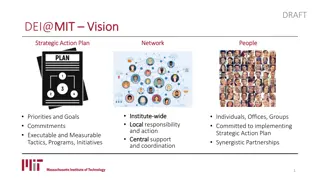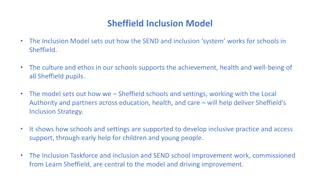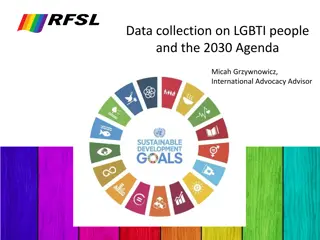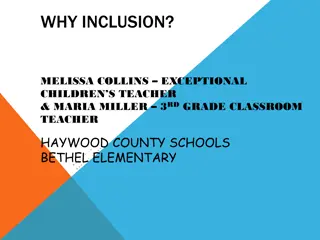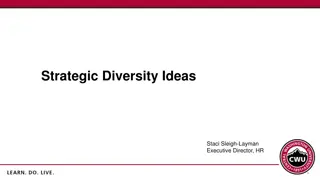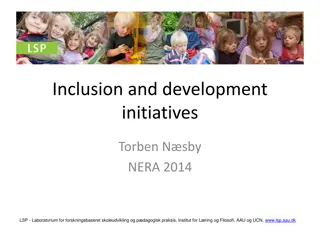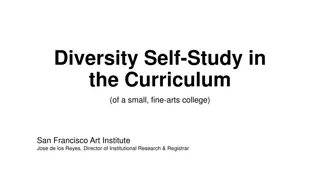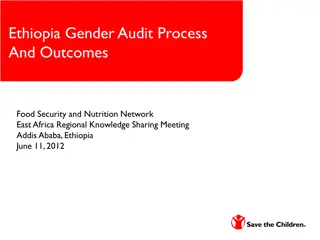Understanding Diversity and Inclusion in Policy and Action
Exploring the evolution of equal employment opportunity laws, this content delves into the definitions of races, physical characteristics, and the implications of discrimination based on these factors. It also discusses Affirmative Action, diversity, inclusion, and allyship in the context of promoting equality in the workplace and society.
Download Presentation

Please find below an Image/Link to download the presentation.
The content on the website is provided AS IS for your information and personal use only. It may not be sold, licensed, or shared on other websites without obtaining consent from the author. Download presentation by click this link. If you encounter any issues during the download, it is possible that the publisher has removed the file from their server.
E N D
Presentation Transcript
The Colors of Inclusion The Colors of Inclusion How to translate words into policy and action
In the beginning In the beginning EEO: Providing equal employment opportunity to all, regardless of race, etc. Title VII of the Civil Rights Act of 1964 prohibits employers from considering race when making employment decisions. White: A person having origins in any of the original peoples of Europe, the Middle East, or North Africa Black or African American: A person have origins in any of the Black racial groups of Africa American Indian or Alaska Native: A person having origins in any of the original peoples of North and South America, including Central America, and who maintains tribal affiliation or community attachment Asian: A person having origins in any of the original peoples of the Far East, Southeast Asia, or the Indian subcontinent, including, for example, Cambodia, China, India, Japan, Korea, Malaysia, Pakistan, the Phillipine Islands, Thailand, and Vietnam Hawaiian or Pacific Islander: A person having origins in any of the original peoples of Hawaii, Guam, Samoa, or other Pacific Islands Ethnicity: People of Hispanic origin are included in EEO protections yet may be different races But, Title VII also holds that discrimination on the basis of an immutable characteristic associated with race, such as skin color, hair texture, or certain facial features violates Title VII, even though not all members of the race share the same characteristic. How did the government define these physical characteristics?
Title VII makes is unlawful to discriminate based on physical Title VII makes is unlawful to discriminate based on physical characteristics/at generally associated with a specific race. characteristics/at generally associated with a specific race. Physical Characteristics of Race Race Am. Indian/ Alaska Native Hawaiian/ Pacific Islander Skin Color Reddish-brown Hair Color Black, dark brown Black Hair Texture Lank, long, circular section Lank, long Eye Color Black, dark brown Black, dark brown Head or Eye Shape Broad head/ Round eyes Brown Round or almond-shaped yeys Black Brown Black or yellow-brown, Black Wooly, coarse, short, flat elliptical section, Red, straight, wavy, curly, oval section Black, lank, long, circular section Black, dark brown Medium broad to narrow head, round or almond- shaped eyes Medium broad head/Round White White, reddish- white, tan, olive- brown Saffron, yellow- brown, reddish- brown Black brown, blond, red Black, brown, blue, green, hazel, grey Black Asian Black Epicanthal fold
The palette moving forward The palette moving forward Affirmative Action: 1965, President Lyndon Johnson signed Executive Order 11246 prohibiting employment discrimination based on race, color, religion, and national origin by those organizations receiving federal contracts and subcontracts. Diversity: How do you define diversity? How is that different from Affirmative Action? Inclusion: How do you define inclusion? How is that different from diversity? What is allyship? How is that different from inclusion?
The palette: its more than race or color or physical characteristics A little exercise
Lets bring this to the workplace Let s bring this to the workplace https://www.youtube.com/watch?v=B6uuIHpFkuo
What do we do about all of this? What do we do about all of this? Diversity training benefits and risks? Small groups: #1: Inclusion how to model this? #2: What are the barriers you encounter? #3: What has been helpful overcoming those barriers? Questions?




